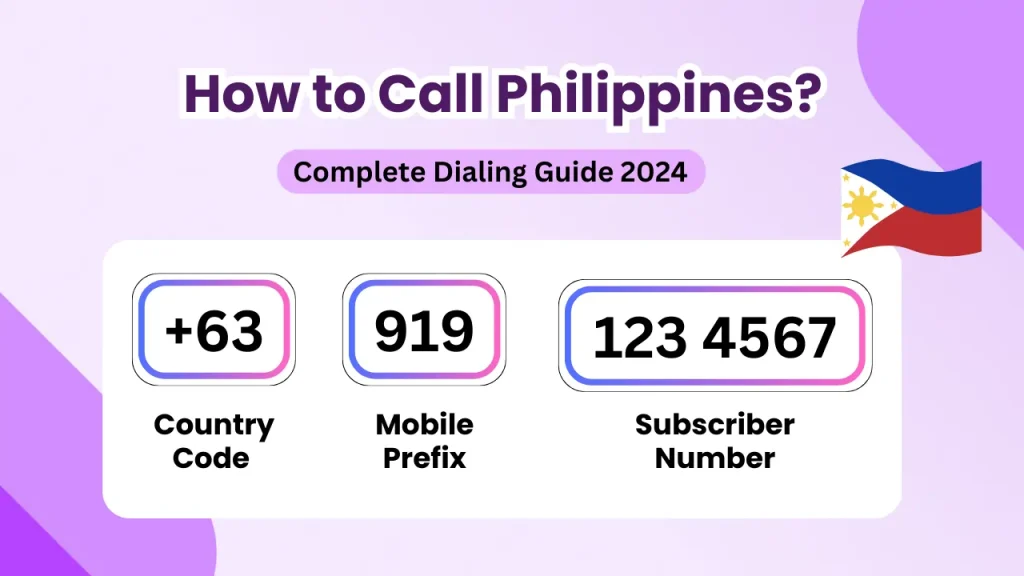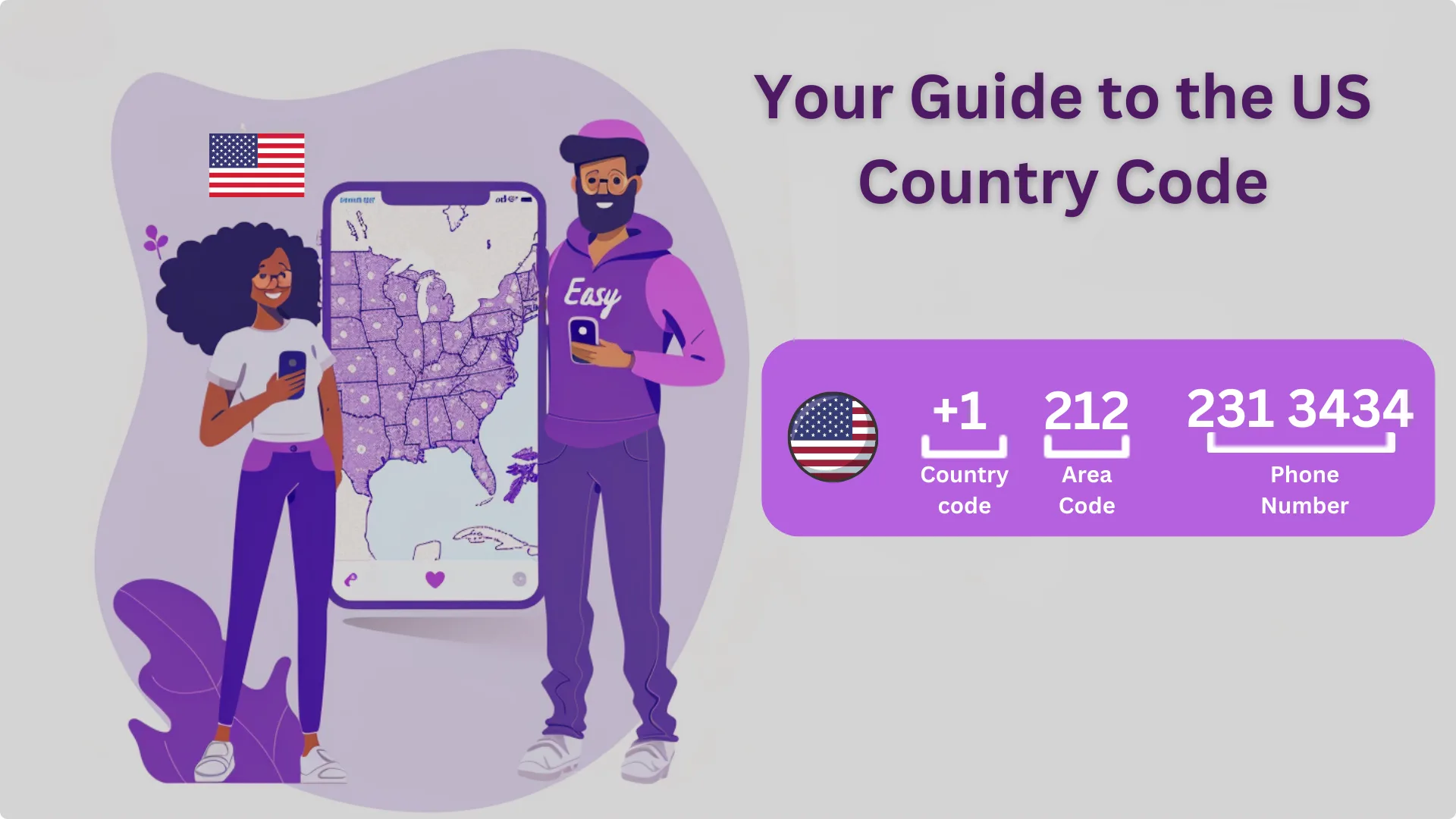Are you looking to make a call to the beautiful Philippines but unsure of the country code and dialing process? Look no further!
In this article, we will guide you through the steps on how to dial both landline and mobile numbers in the Philippines. From entering the international access code to understanding the area codes, we’ve got you covered.
Stay tuned for valuable tips on making calls to the Philippines and avoid any additional charges. Let’s get started!
Key Takeaways:
- Make sure to dial the correct country code (63) when calling the Philippines
- For landline numbers, remember to include both the area code and local number
- Don’t forget to consider time differences and potential additional charges when calling the Philippines
How to Call Philippines: Understanding the Country Code (+63)
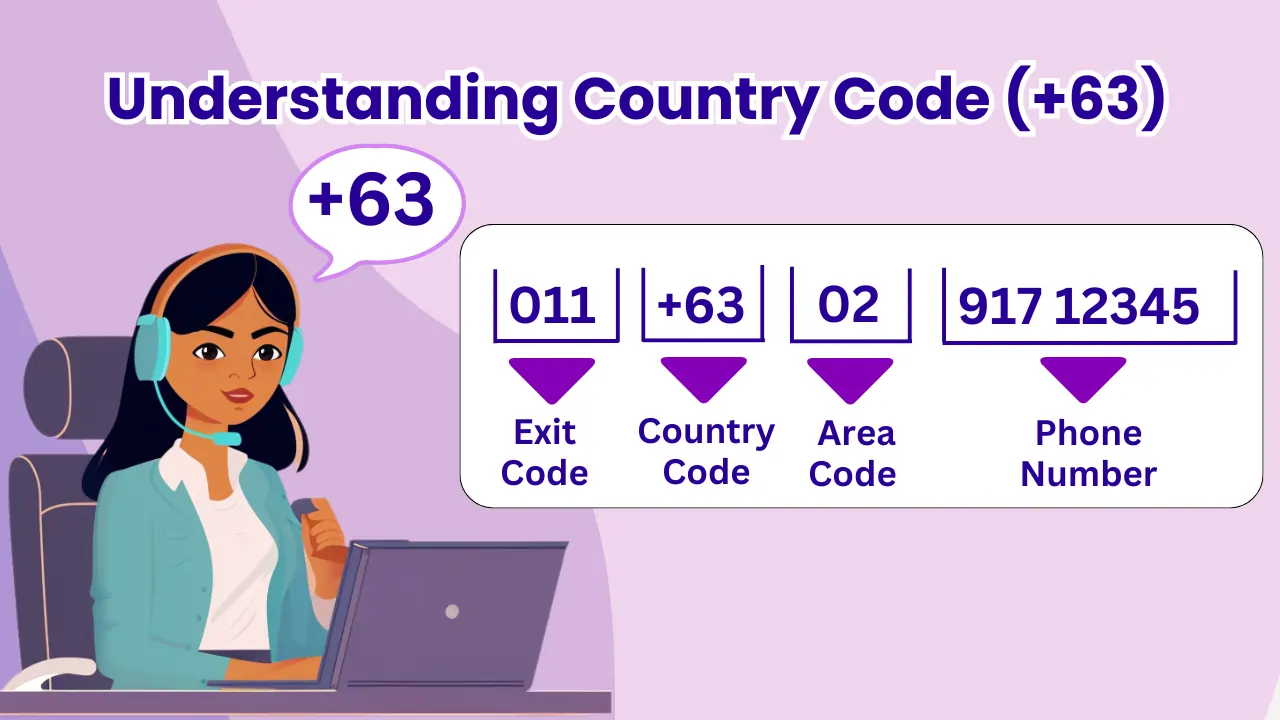
The Philippine country code, +63, plays a critical role in ensuring your international call reaches its destination in the Philippines. It acts like a unique identifier for the country within the global phone network. Here’s a breakdown of its significance:
- Gateway to the Philippines: When you include +63 at the beginning of your dial sequence, you’re essentially instructing the international network to route your call to the Philippines. It acts as a gateway that directs your call to the correct country.
- Universal Recognition: This code is universally recognized by international phone networks, eliminating any confusion about where your call is headed. Without it, your call might not be directed to the Philippines and could potentially end up in the wrong country.
- Example in Action: Let’s say you’re calling a landline number in Manila from the United States. You would dial the US exit code (typically 011), followed by +63 (the Philippine country code), then the Manila area code (e.g., 2), and finally the local phone number. Each part of this sequence plays a specific role in connecting you to the desired recipient.
Calling codes include the country code, area code, and local number, which are essential for successfully connecting international calls.
Beyond Country Codes: Area Codes and Local Numbers
While the country code (+63) directs your call to the Philippines, additional codes are needed to pinpoint the exact location within the country. Here’s a quick explanation of area codes and local numbers:
- Area Codes: These codes further specify the city or region within the Philippines. For example, the area code for Manila is 2, while Cebu City uses 32. Including the area code ensures your call reaches the intended geographic area.
- Local Numbers: These are the unique seven-digit numbers assigned to individual landline phones. For mobile phones in the Philippines, the local number is ten digits long and typically starts with a 9.
By combining the country code (+63), the area code, and the local number, you create the complete dialing sequence needed to connect your call to a specific phone in the Philippines.
How to Dial a Landline Number in the Philippines
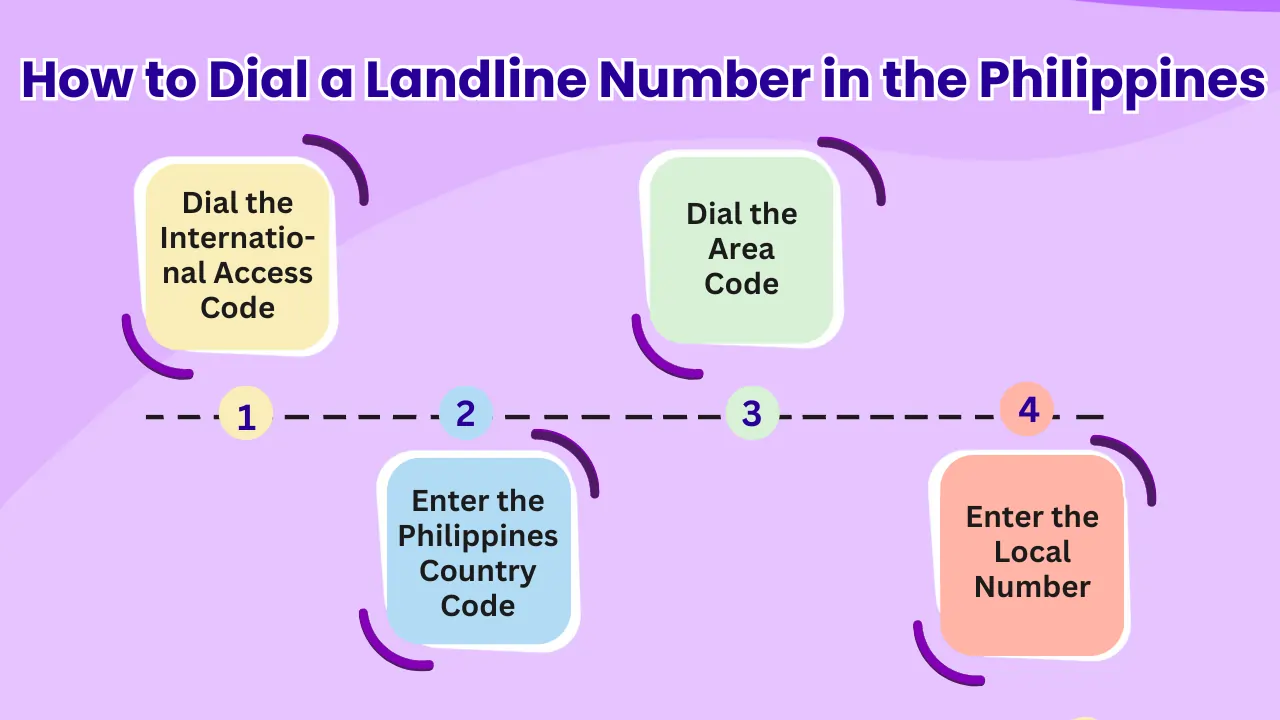
Dialing a landline number in the Philippines involves a series of steps, starting with the country exit code, followed by the country code, area code, and finally the local number.
Dial the International Access Code
- To initiate an international call to the Philippines from the US or Canada, you first need to dial the exit code, which is 011.
- The purpose of an exit code is to signal the start of an international call and inform the phone system that the following numbers will be international. It essentially ‘exits’ the national telephone network.
For instance, in the UK, the exit code is 00, in Australia it’s 0011, while in Japan it’s 010. Remember that before dialing the country code, always enter the exit code to ensure your call is connected properly. Failing to do so may result in the call not going through.
Enter the Philippines Country Code
- After dialing the international access code, you must enter the Philippines country code, which is +63.
- Country codes play a crucial role in the dialing process as they help route calls to the correct destination.
The country code essentially identifies the country being called, allowing the call to be directed accurately. Along with the Philippines country code +63, other examples of country codes include the United States (+1), the United Kingdom (+44), and Japan (+81).
Dial the Area Code
- Next, you need to dial the specific area code for the city you are calling in the Philippines; for example, the area code for Manila is 2.
- When calling Cebu City, you’ll have to use area code 32, while for Davao City, the area code is 82. These area codes serve as geographical identifiers that help route your call to the correct region.
By including the area code along with the local number, the call gets directed to the precise destination, ensuring smooth communication with the intended party.
It’s crucial to get the area code right, as inaccuracies could lead to the call being misrouted or not getting connected at all.
Enter the Local Number
- Key in the local number of the landline you wish to call in the Philippines.
- A local number in the Philippines typically consists of seven digits, beginning with either a 2 or a 3.
To call a landline within the same city, you’d simply dial the seven-digit number after the area code. For example, if you are in Manila and want to call a local landline number 123-4567, you’d dial 123-4567. If you’re calling a landline outside of your city but within the country, you need to include the area code before the local number.
How to Dial a Mobile Number in the Philippines
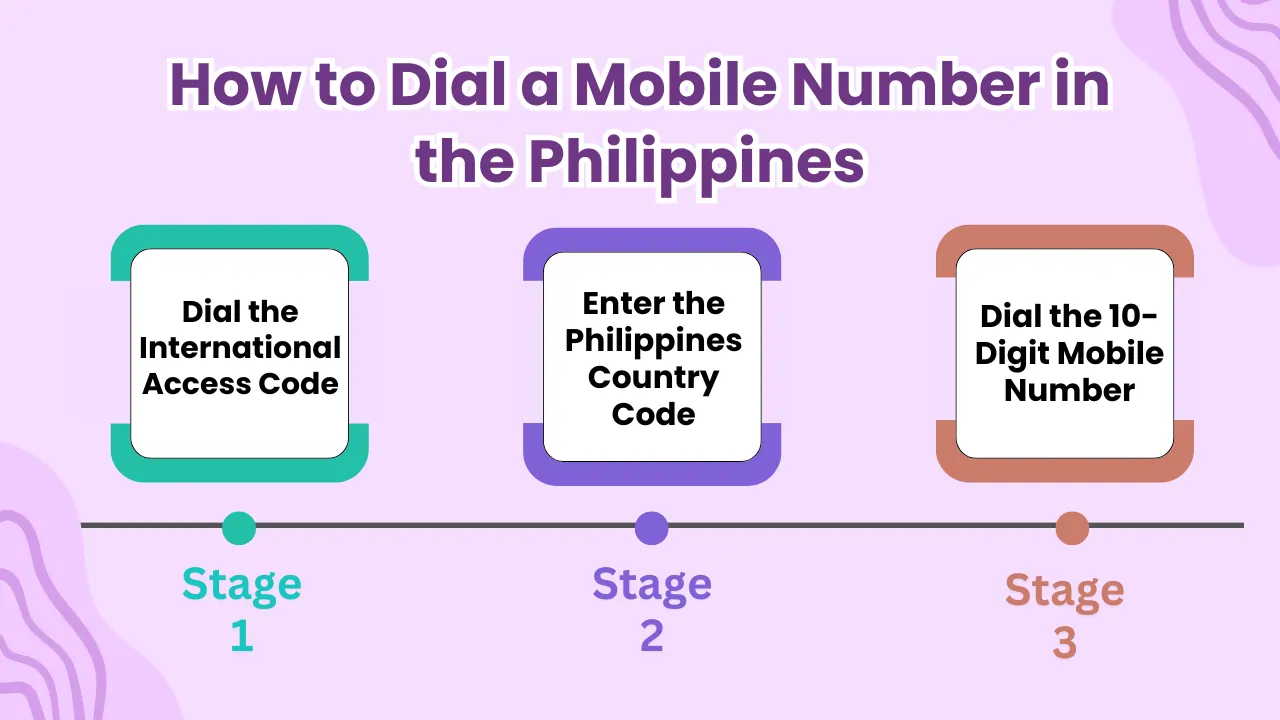
Dialing a mobile number in the Philippines from a cell phone follows a similar process to dialing a landline, with the difference being the format and length of the mobile number, which usually starts with 9 and is followed by a 10-digit number.
When using cell phones to make international calls, it is important to follow the correct dialing sequence to ensure the call connects properly.
Dialing a Philippines cell phone number requires entering the country code, followed by the 10-digit mobile number.
Dial the International Access Code
Begin by dialing the international access code, which is 011 for calls originating from the US. This crucial step serves as the gateway for your call to reach its international destination. Without entering the correct exit code, your call might not be able to connect to the desired country.
By including this code in the dialing sequence, you are opening up the lines of communication across borders. Whether you are contacting a relative abroad or making a business call overseas, using the correct exit code ensures that your call is directed to the right location, enhancing the chances of a successful connection.
Enter the Philippines Country Code
After the exit code, you will need to enter the Philippines country code, +63. The +63 country code is a vital component in international dialing as it ensures that your call reaches the correct destination in the Philippines.
This unique code is specific to the country, distinguishing it from others in the global phone network.
When you include the +63 country code in the dialing sequence, you are essentially informing the telephone system that your call is intended for the Philippines. This simple yet crucial step helps in smoothly directing your call to the recipient in the designated country.
Dial the 10-Digit Mobile Number
Dial the 10-digit mobile number, which typically starts with a 9.
In the Philippines, the structure of a mobile number is crucial to note for effective communication. Mobile numbers in the country generally consist of 10 digits, with the first digit being a 9. This distinguishes mobile numbers from landline numbers, which have a different set of prefixes and numbering pattern.
For example, when dialing a Philippine mobile number from either a local or international line, it is important to include the country code (+63) followed by the network prefix (e.g., 917 for Globe, 906 for Smart).
Services for Making Calls to the Philippines
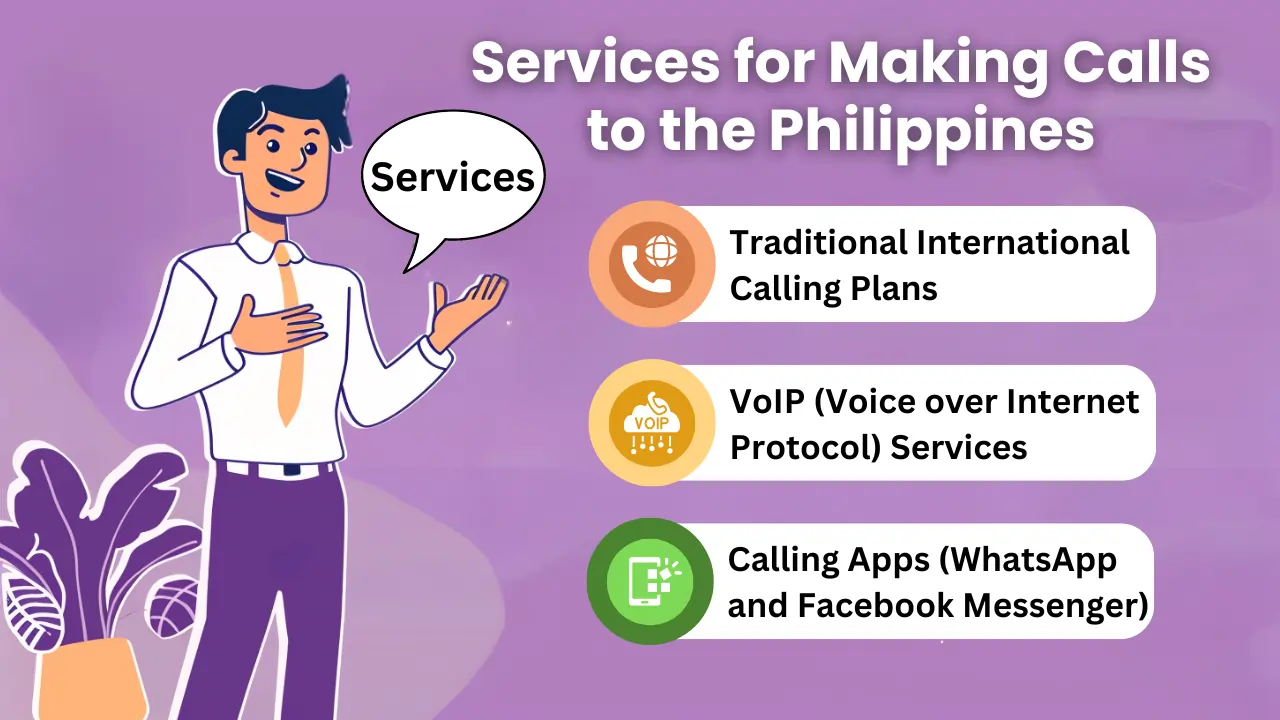
With the rise of technology, there are various options available for making calls to the Philippines from the USA, each with its own advantages and disadvantages. Here’s a breakdown of some popular choices:
1. Traditional International Calling Plans
Offered by phone service providers, these plans typically bundle a certain number of minutes for international calls at a fixed rate. Ideal for those who make frequent calls to the Philippines and want a predictable cost structure.
Pros: Reliable and convenient, especially for users already subscribed to a phone service provider’s plans.
Cons: Can be expensive, especially for infrequent callers or long conversations. Limited minutes may not be suitable for everyone.
2. VoIP (Voice over Internet Protocol) Services
Services like Skype, Viber, and Rebtel allow calls over the internet, often at significantly lower rates compared to traditional phone plans. Require a stable internet connection and downloading the respective app on both the caller’s and receiver’s devices.
Pros: Cost-effective, especially for long calls. Many offer video calling features for a more personal touch.
Cons: Call quality can depend on internet connection strength. May not be suitable for users with limited internet access.
Calling Apps
Popular messaging apps like WhatsApp and Facebook Messenger have integrated free or low-cost calling features. Utilize an internet connection for calls, but unlike VoIP services, they leverage existing contact lists within the apps.
Pros: Free or very affordable for calls between app users. Convenient for those already using these messaging platforms.
Cons: Call quality can vary depending on internet connection. May not be suitable for calling landlines or users who don’t use the app.
Choosing the Right Service:
The best service depends on your calling habits and budget. Consider these factors:
- Frequency of Calls: If you call the Philippines frequently, a traditional plan with bundled minutes might be cost-effective.
- Call Duration: For longer conversations, VoIP services often offer lower rates.
- Internet Availability: Reliable internet access is crucial for VoIP calls and calling apps.
- Budget: Traditional plans offer predictability, while VoIP and calling apps can be budget-friendly for the internet-savvy.
By understanding these options, you can choose the service that best suits your needs and ensure a smooth and cost-effective calling experience when connecting with loved ones in the Philippines.
Tips for Calling the Philippines
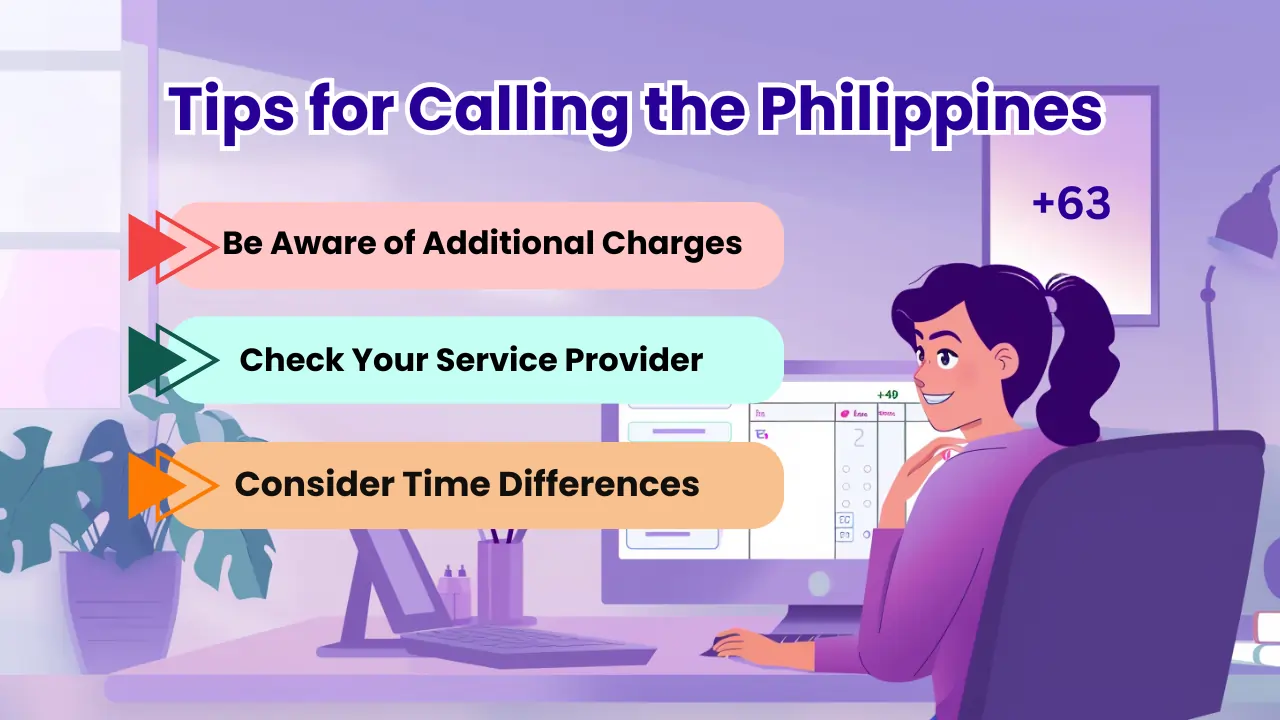
When calling the Philippines, there are several factors to consider, including your service provider, the time zone differences, and the potential for additional charges.
Check Your Service Provider
Before making international calls to the Philippines, check with your service provider to understand the call rates and available international calling plans.
Consulting with your service provider before placing international calls plays a crucial role in managing your communication expenses effectively. By doing so, you can gain insight into the different call rates applicable to your destination and avoid any unexpected charges that may arise due to lack of information.
An essential benefit of international calling plans is that they offer cost-effective solutions for staying connected with your loved ones or conducting business overseas. These plans often come with discounted rates for specific regions, saving you money compared to standard international call charges.
Consider Time Differences
It’s crucial to consider the time differences between your location and the Philippines, as this can impact the best time to make your call.When reaching out to contacts in the Philippines, it’s important to be aware that the country is typically 13 hours ahead of US Eastern Standard Time. This means that if it’s morning in New York, it’s already evening in Manila.
To avoid confusion and ensure you make your calls at the most appropriate times, tools like Savvy Time can come in handy. By using this tool, you can easily calculate the time difference and find the perfect window for scheduling your calls. Understanding these time zone disparities can help you establish effective communication and make the most out of your interactions
Be Aware of Additional Charges
Be aware that calling costs can vary significantly based on whether you are calling a landline or a mobile phone in the Philippines. Calls to mobile phones often incur higher charges compared to landlines due to different pricing structures of mobile networks. To manage these costs, check with your service provider for any specific mobile phone calling plans or packages that may offer discounted rates.
Consider using alternative communication methods like messaging apps or VoIP services to reduce the need for frequent mobile phone calls. Setting up a call budget or using a prepaid mobile plan can also help control expenses. Monitoring your call durations and choosing the most cost-effective times to make calls can further aid in managing your calling expenses.
Cost-Effective Calling to the Philippines: Exploring Alternatives
Making international calls can be a budget concern, especially when connecting with loved ones overseas. Here, we explore some cost-effective alternatives to traditional phone plans for calling the Philippines:
| Calling Method | Pros | Cons |
|---|---|---|
| VoIP Services (Skype, Viber, Rebtel) | – Significantly lower rates compared to traditional plans | – Requires stable internet connection |
| Calling Apps (WhatsApp, Facebook Messenger) | – Free or low-cost calls between app users | – Call quality may vary depending on internet |
| Rebates & Reward Programs | – Discounted rates for frequent callers | – May require specific service providers or VoIP platforms |
| Utilize Free Wi-Fi | – Reduces call costs compared to mobile data | – Reliant on finding locations with free Wi-Fi |
Conclusion
Making international calls to the Philippines involves understanding the correct dialing format, being aware of the relevant codes, and considering factors such as time zones and service provider costs.
When dialing to the Philippines, it is crucial to start with the international access code, followed by the country code for the Philippines which is +63. Then, dial the area code and the local phone number to complete the call. Keeping in mind the time zone difference between your location and the Philippines is essential to avoid calling at inconvenient hours. Taking note of your service provider’s international call rates can also help you manage costs effectively.
FAQ's
What is the country code for calling the Philippines?
The country code for calling the Philippines is +63. This is necessary to dial before the area code and local number in order to connect your call.
How do I call Manila, the capital city of the Philippines?
To call Manila, you will need to dial +63 2, followed by the local number. This applies to all landline numbers in the city.
Do mobile numbers in the Philippines have a different dialing code?
Yes, mobile numbers in the Philippines start with +63 followed by a 10-digit number starting with 9. This is different from landline numbers which start with +63 followed by a 2-digit area code.
What if I am unsure of the area code for a specific city in the Philippines?
If you are unsure of the area code for a specific city in the Philippines, you can simply dial +63 followed by the full 10-digit number. This will connect you to the desired location.
Is there a difference in calling the Philippines from a landline or a mobile phone?
No, the process of calling the Philippines is the same whether you are using a landline or a mobile phone. You will still need to dial +63 followed by the appropriate area code and local number.
What should I do if I am having trouble making a call to the Philippines?
If you are having trouble making a call to the Philippines, first make sure you have the correct country code and area code. If the issue persists, contact your service provider to ensure that international calling is enabled on your plan.
Is there a way to call a toll-free number in the Philippines from abroad?
Generally, calling toll-free numbers internationally isn’t possible. These numbers are specific to a country’s phone network and often don’t work across borders. It’s best to check if the Philippine contact has an alternative number you can reach.
Can I receive calls from the Philippines for free?
This depends on your phone plan. Some providers offer unlimited incoming calls, including international calls. Check your plan details or contact your provider for clarification.
How can I find the latest information on calling rates and service options for the Philippines?
- Service provider websites: Check your phone service provider’s website for the latest international calling rates and plan options.
- Online resources: Websites and apps like Google Voice or Rebtel can help you compare rates and features from various VoIP service providers for calls to the Philippines.
What are some alternative ways to connect with someone in the Philippines besides calling?
- Messaging apps: Popular options like WhatsApp, Viber, and Facebook Messenger offer free text messaging and sometimes free or low-cost voice and video calls.
- Social media: Platforms like Facebook and Instagram allow for direct messaging and video chat features.
- Email: While not ideal for real-time communication, email remains a reliable and convenient way to send messages and documents

